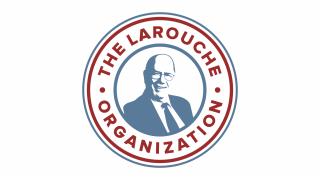Jan. 1—What a start to 2023!
Today Brazil has a new President, Lula da Silva, who made clear at his inauguration that Brazil is to link up with Argentina in a fight for economic development and the rolling back of poverty in South America. And he has made clear the last several days, that, after the previous President Jair Bolsanaro turned his back, now Brazil will be part of a renewed drive for coordination with Russia, India, China and South Africa—Brazil’s BRICS collaborators—on that economic development.
Today South Africa takes the leadership of the BRICS for 2023, and its Foreign Ministry head of public diplomacy Clayton Monyela emphasized their prioritization for strengthening the economic, political, social and cultural cooperation of the five. But this is not your grandfather’s BRICS—as Argentina, Iran and Algeria have submitted applications. And Saudi Arabia, the U.A.E., Egypt, Indonesia, Turkey and Afghanistan have expressed their interest in applying; and Nigeria, Kazakhstan, Thailand, Senegal and Nicaragua have all begun attending BRICS Expansion dialogue events on the ministerial level. Instead of a long “alphabet” name, it could well be the core of the new world economic order—modeled on China’s Belt and Road, the living and breathing successful development of the “America” model. That is, the real America model of government credit based upon scientific, industrial and agricultural projects.
Today Russia became the chair of the Eurasian Economic Union for 2023—whose other members are Armenia, Belarus, Kazakhstan, and Kyrgyzstan—and Putin has already made clear their priorities, as TASS reported, summarizing his Dec. 9 remarks in Bishkek: The top priorities include the formation of a common EAEU gas market, the development of north-south and west-east transport corridors (with an emphasis on in-depth transportation infrastructure), and the facilitation of the further extension of agreements with foreign partners for continued economic development—including China and others.
Yet the specter of thermonuclear war hangs over the birth of 2023. The insanity of exporting the disastrous “NATO expansion” geopolitics in Europe, now to Asia, is a very real and present sickness. In the wake of the U.S. administration’s deliberate military provocations of China, the (at best) semi-stable Korean Peninsula threatens to unravel and erupt into a nuclear showdown. The threats between North and South Korea are now at the nuclear decibel level. But don’t make the mistake of blaming them. How could they pull back from the brink when an intellectually and morally bankrupt “British Empire” policy dominates the U.S., and has so poisoned the waters?
The quality of leadership, morality, and even genius required to steer the world into and through 2023 is a rare one, but that quality can be nurtured and developed. A small example today exists in a simple comparison of the New Year’s Eve speeches of two Presidents, Russia’s Putin and Ukraine’s Zelenskyy. Normal sentences with content and the use of verbs in one; brief, thoughtless images drummed up in a staccato manner and frequently lacking any verbal action in the other.
Suffice it to say, despite the mind-boggling, deadening verbiage of Western so-called public discourse, there’s still a real threat that an outbreak of public sanity takes hold. Time to put some resolution in our resolution.






